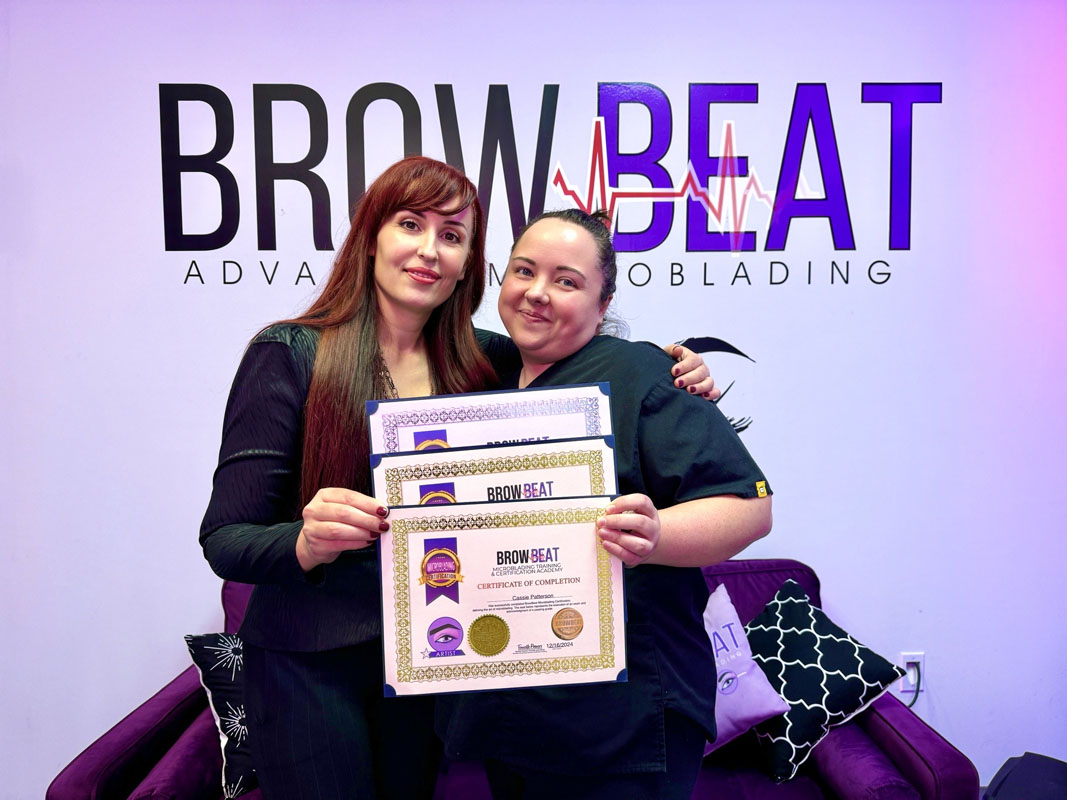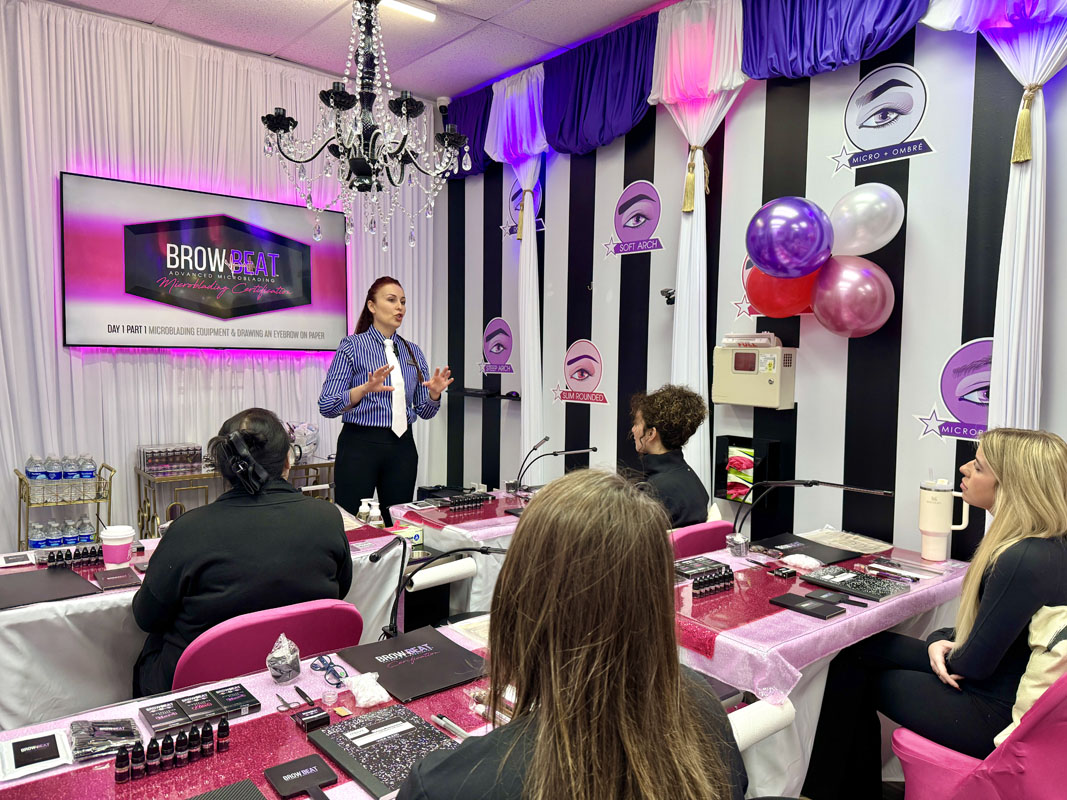Dallas is one of the strongest cities in the country for semi-permanent makeup. Clients here want brows that look refined, natural, and low maintenance—even in Texas heat. That demand is why microblading classes in Dallas are consistently full and why artists who also master combo brows (microblading + ombré shading) rise to the top. If you are serious about building a future-proof brow career, learning both techniques together gives you an edge that single-tech training simply cannot match.
In this guide, you will learn what makes Dallas an exceptional place to train, how combo brow capability expands your client base, and what to expect from a high-quality dual-tech curriculum. You will also find a step-by-step view of skill development—mapping, stroke mechanics, shading control, and business systems—so you can move from training to consistent results with confidence.
See upcoming Dallas class dates · Microblading course overview
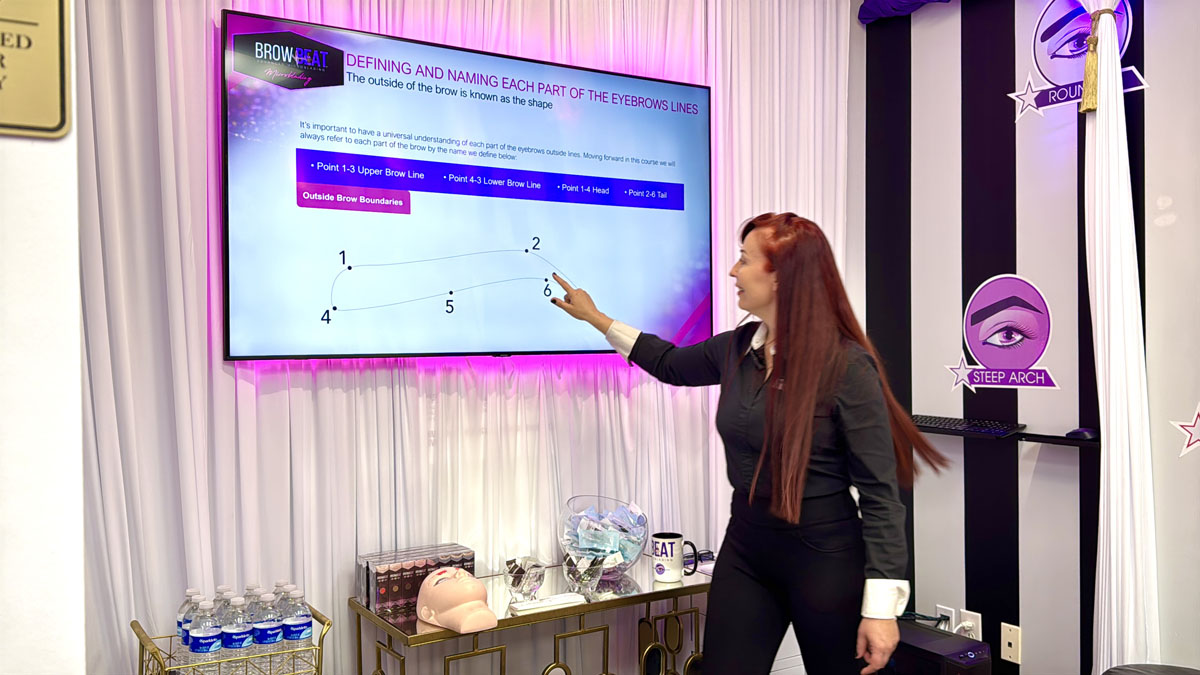
Why Dallas Is the Perfect Place to Learn Microblading and Combo Brows
Beyond the world-class food and culture, Dallas offers a rare combination of consistent beauty demand, a large service economy, and an audience that appreciates long-lasting aesthetic services. That environment is ideal for new and advancing artists who want to build a loyal client base quickly and sustain it over time.
- Constant demand: Dallas–Fort Worth’s population growth fuels steady interest in brows that look done without daily effort.
- Client variety: You will meet every skin type and style preference here, which is perfect training ground for both microblading and shading.
- Portfolio potential: The city is social-media savvy; crisp before/after photos travel far and fast, bringing you referrals.
- Career mobility: Artists frequently expand into neighboring markets (Plano, Frisco, Arlington), all reachable from Dallas.
What “Combo Brows” Really Means (and Why Clients Ask for Them)
Combo brows blend the best of both worlds: realistic hair strokes where you want texture and ombré powder shading where you want density and polish. The result is a brow that photographs beautifully and looks naturally full in person. In practical terms, combo capability lets you solve more client requests on day one—sparse fronts, missing tails, asymmetry, or a desire for a softly made-up brow without daily makeup.
- Texture + definition: strokes create the illusion of natural hairs; shading fills gaps and adds crisp shape.
- Adaptable: you can dial the amount of shading from airy and soft to more defined—perfect for Dallas clients who want “done but not drawn on.”
- Skin-type friendly: shading holds up beautifully on oily or mature skin, where strokes alone may soften quickly.
To deepen your understanding of the shading half of the combo, review the dedicated Ombré Powder Brow Certification training focus.
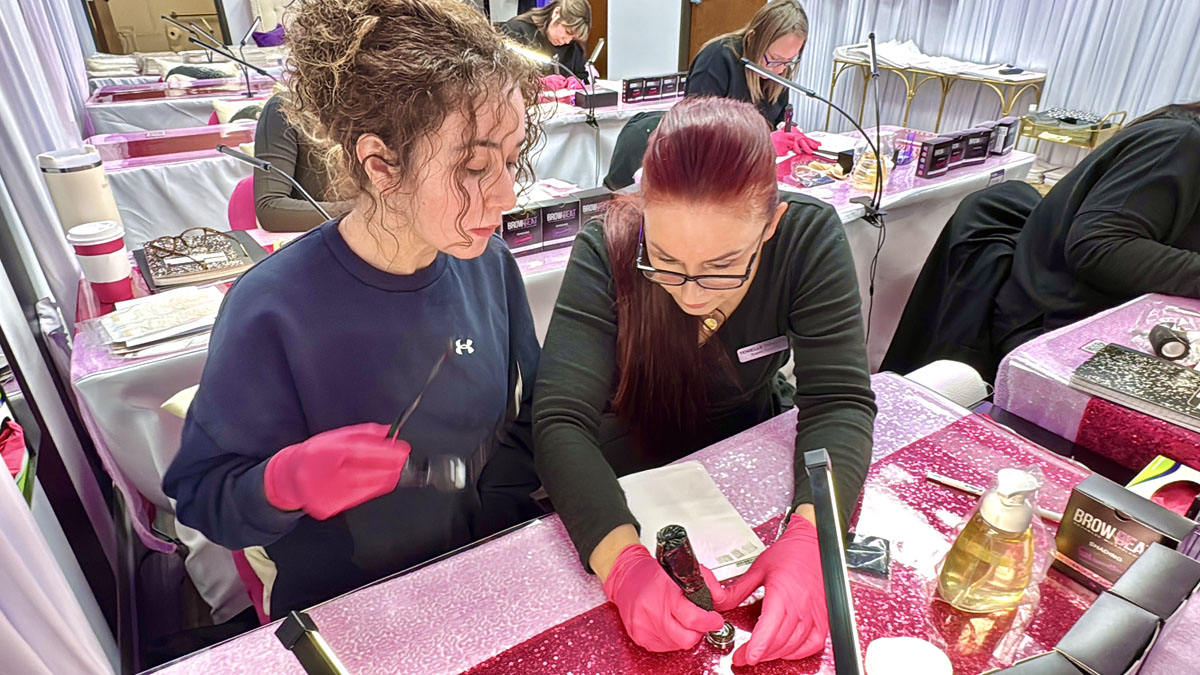
Microblading Classes in Dallas: What You Will Actually Learn
Great classes teach you to make decisions, not just to follow steps. You need mapping rules that hold under pressure, stroke mechanics that stay clean when you are tired, and shading control that remains soft and even. Here is what a well-structured Dallas program should cover using a simulation-first approach (no promises of live models):
Mapping: Design with Restraint
Beautiful brows start with conservative design—getting symmetry right and respecting facial landmarks. You will learn to:
- Mark the six key reference points for balance and proportion.
- Choose a conservative length and arch height for believable realism.
- Use string mapping and calipers for repeatable results, client to client.
- Adapt design for previous PMU and explain options clearly to clients.
Stroke Mechanics: Build a Real Hair Pattern
Microblading is precise handwork. You will run drills that reinforce rhythm, depth, and hand placement through simulation exercises on paper and silicone skins:
- Head, spine, upper and lower rows, and inner detail strokes.
- Depth control for clean incisions and smooth pigment retention.
- Spacing and angle choices that mimic real hair growth.
- Flow from the head into the arch and tail without “barcodes.”
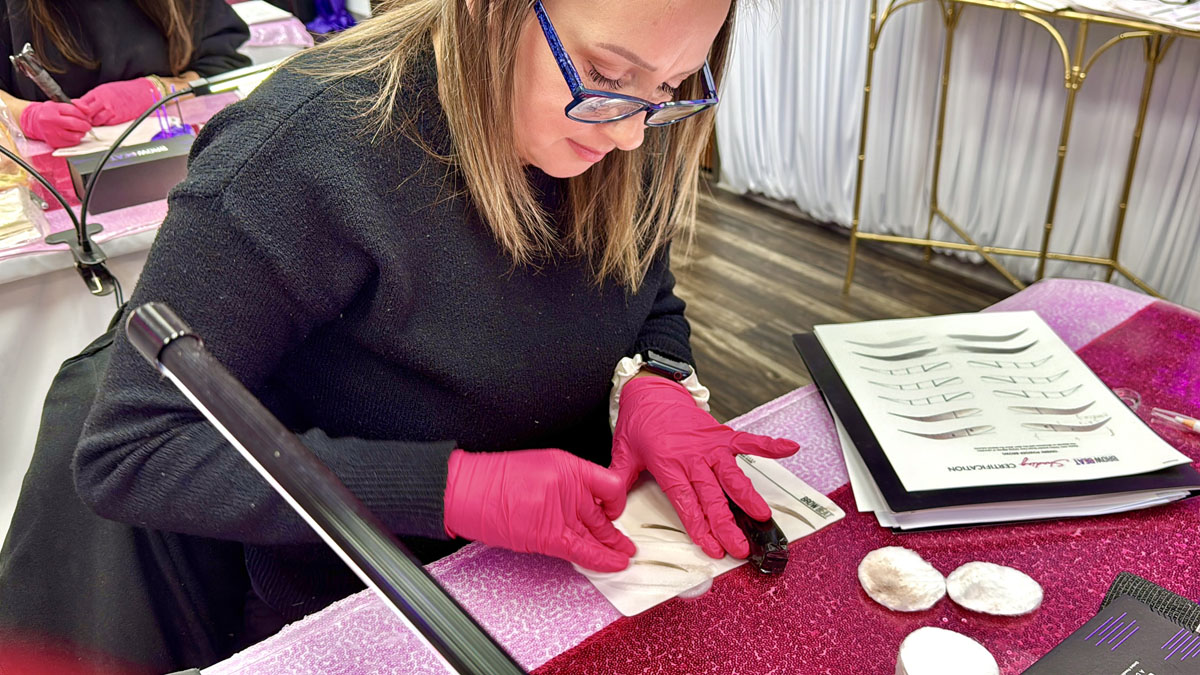
Shading Control: Pixelation, Lining, and Layering
Shading gives structure and polish. With a PMU machine, you will learn how to create a soft gradient that reads “powder” instead of “blocky makeup.” Training covers:
- Machine angle and hand speed for even pixels.
- Lining to establish borders without harsh edges.
- Layering passes for depth without oversaturation.
- Density control: airy fronts, supported arches, clean tails.
Combo Workflow: When to Stroke, When to Shade
Combo is about decisions. You will practice placing strokes where texture matters (often the front and upper brow) and shading where structure is needed (arch and tail). The goal: natural rhythm up close and photo-ready definition at a distance.
Inside a Dallas Training Kit (What You Take Home)
A solid program equips you with a kit that lets you keep practicing immediately. A typical kit includes:
- Wireless shading machine with multi-speed control.
- Microblading blades and handles for daily stroke work.
- Pigments for blondes, brunettes, deeper tones, and correction basics.
- Mapping string, calipers, rulers, and pencils.
- Silicone skins for stroke and shading drills; headbands for practice positioning.
- Ring cups, grip tape, tweezers, scissors, razors, and protective covers.
- Consent forms and guidance on Texas compliance paperwork.
Paired with a realistic class schedule and daily drills, this kit becomes the backbone of your progress long after class ends. For results inspiration, browse the Gallery.
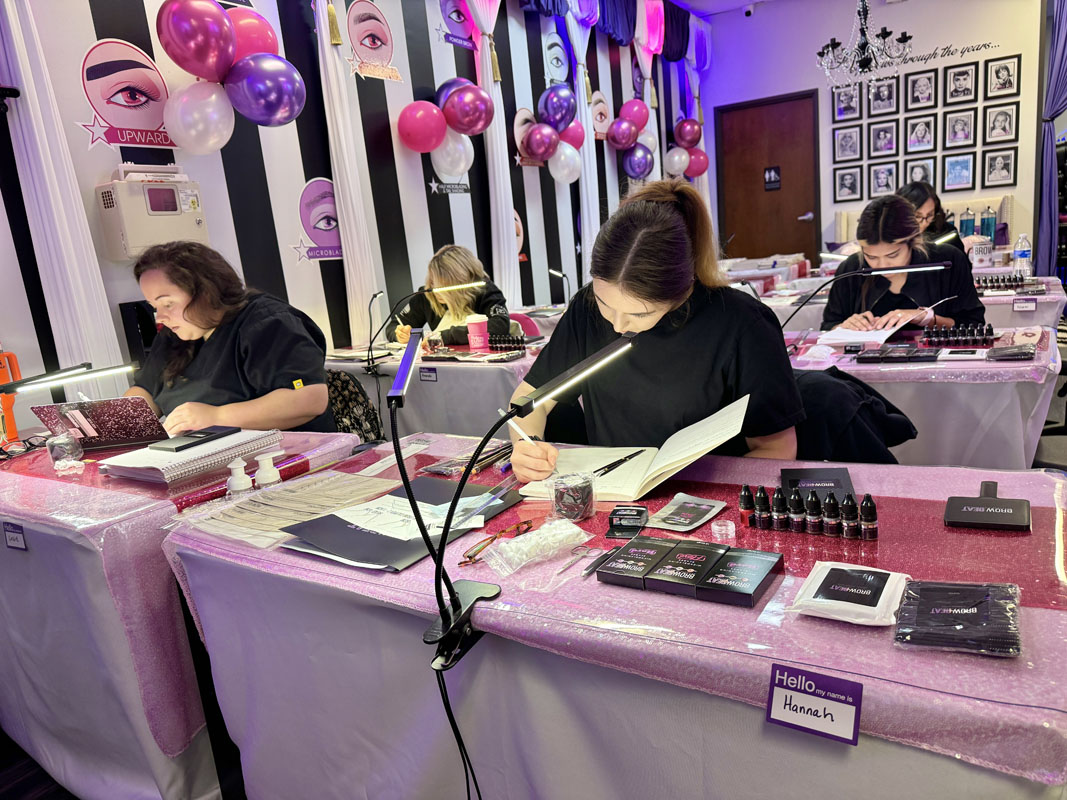
Dallas Client Profiles: Matching Technique to Real Demand
Dallas has every kind of client, which is why dual-tech training matters. Here are common profiles and the approach that typically delights them:
- The minimalist: wants “my brow, but better.” Use conservative strokes; add whisper-light shading only if the arch needs support.
- The gym devotee: wants indelible polish that survives workouts. Rely on ombré shading for durability; place a few strokes at the front for texture.
- The glam client: wants crisp definition that photographs well. Start with a clean shaded base; add strokes for 3D effect near the front or peaks.
- Mature skin: tends to love soft shading. Layer pixels gently; strokes can be sparsely used for texture.
- Oily skin: often holds shading better than strokes. Build density through layered ombré and limit stroke count.
From Class to Calendar: Turning Skills into Bookings
Skills create results, but systems fill your schedule. Dallas artists who succeed quickly build a simple, repeatable business framework alongside their technique.
- Clear menu: list microblading, powder, and combo as separate options, each with refresh pricing.
- Pricing with purpose: premium outcomes deserve premium positioning—especially combo brows.
- Booking flow: confirmations and reminders that reduce no-shows and protect your time.
- Portfolio engine: consistent lighting and angles; front, three-quarter, and full-face shots.
- Reviews & referrals: ask every happy client; display highlights prominently.
For a deeper dive into operations, explore our training program’s approach to systems, pricing, and retention strategies in the course overview here: Microblading training details.
Simulation-First Practice: Why It Works
Practice during training is performed through simulation exercises (paper, silicone skins, and positioning headbands). This controlled approach lets mentors correct depth, hand angle, and rhythm precisely and safely. You build muscle memory in a structured way, then continue practicing after class to translate those mechanics to client services at your pace. There are no promises of live models—focus stays on mastering the mechanics that produce consistent results.
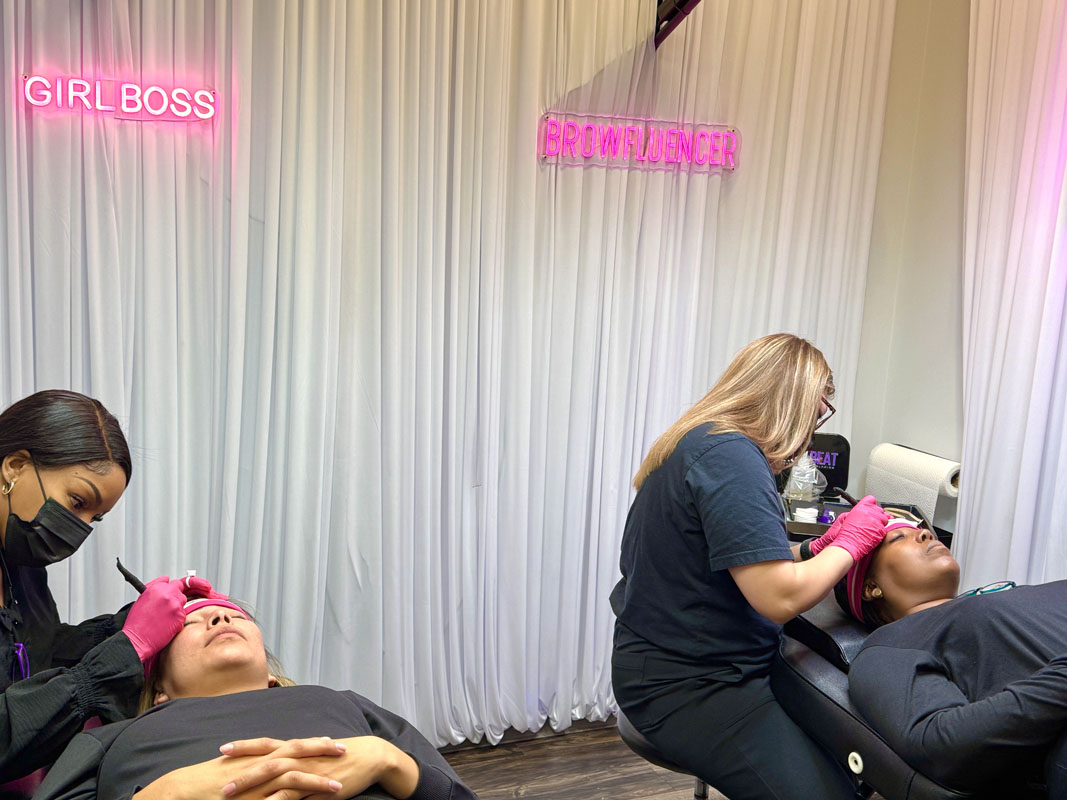
FAQs — Dallas Microblading Classes with Combo Brows
How long are the classes?
Training typically runs three days. Day One focuses on mapping and stroke drills, Day Two covers hygiene, pigment theory, and ombré orientation, and Day Three moves into hands-on shading practice and the combo brow workflow, plus business essentials.
Are these classes beginner-friendly?
Yes. The curriculum is designed for beginners and working beauty pros. You start with fundamentals and build steadily toward shading and combo decision-making.
Do I need a license to enroll?
No, you do not need a license to take the course. In Texas, a tattoo license is required to work professionally. Training includes guidance on the application process and safe, compliant habits in the treatment room.
Will I work on live models?
No. Training uses structured simulation exercises for safety and consistency. This approach allows precise feedback on pressure, spacing, and angle without the variables of live skin.
What should I bring?
Wear professional, comfortable clothing and closed-toe shoes. The kit and class materials are provided; Notebooks are provided for mapping notes and stroke counts.
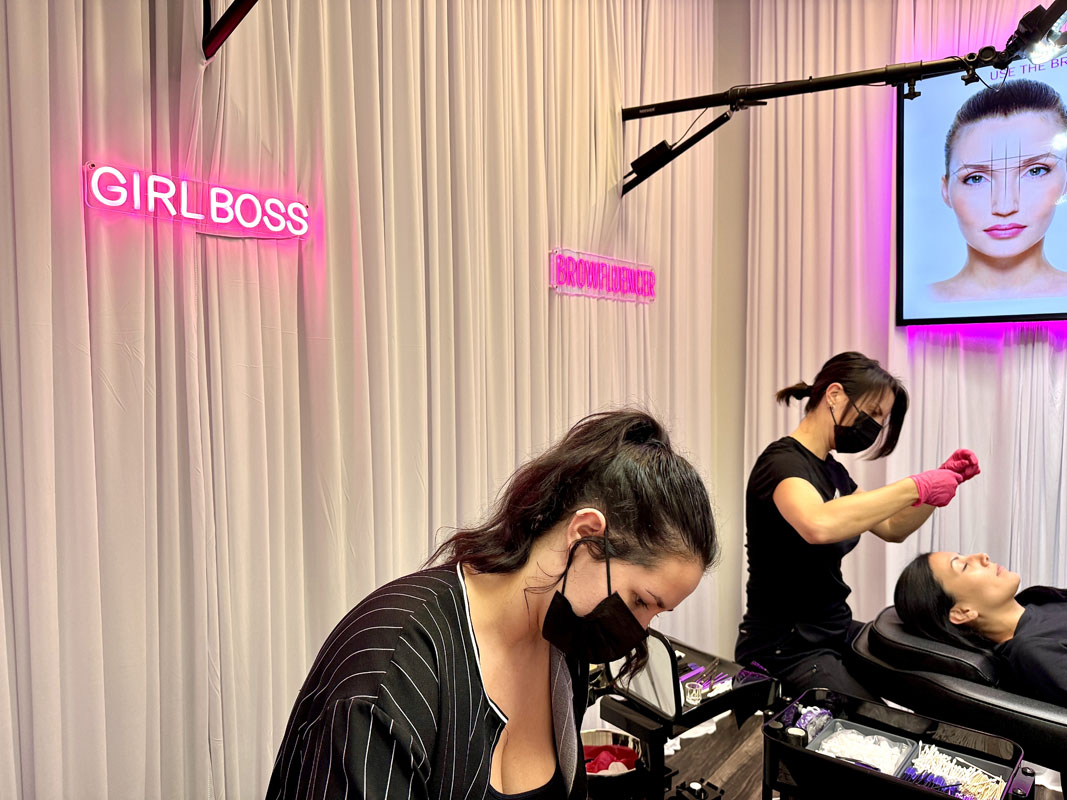
What is included in the kit?
Wireless machine, blades and handles, pigments, mapping tools, silicone skins, disposables, protective items, consent forms, and guidance on Texas compliance paperwork. The goal is simple: keep practicing effectively after class.
How do combo brows heal compared to strokes-only?
Combo brows often heal with a soft, even density thanks to shading, with strokes adding texture. Strokes-only brows can look very natural but may appear lighter on oily or very active skin types.
Where can I see examples of work?
Browse the Gallery for results and class visuals. Use the images as a guide for the lighting and framing you will want in your own portfolio.
How to Choose the Right Dallas Microblading Class
- Daily structure is clear: each day has defined goals and skill checkpoints.
- Class sizes are manageable: mentors can circulate and correct mechanics individually.
- Kit is robust: tools and materials support weeks of continued practice at home.
- Business training is included: pricing, policies, booking systems, and client management.
- Evidence is public: galleries and detailed student feedback, not just marketing claims.
Conclusion: Dallas + Combo Training = A Career Edge
Dallas is more than a great place to live; it is a fertile city for beauty careers. Clients here value brows that hold up at the gym, at work, and in photos. When your skill set includes both microblading and shading, you are prepared for almost any request—from ultra-soft realism to polished definition. That range is exactly why artists who master combo brows often see faster word-of-mouth and stronger portfolios.
If you are ready to train in Dallas, build a versatile menu, and grow a booked-out calendar, start by pairing microblading classes with combo brows. Your clients will see the difference—and so will your schedule.
Check DFW class availability · Contact an advisor
